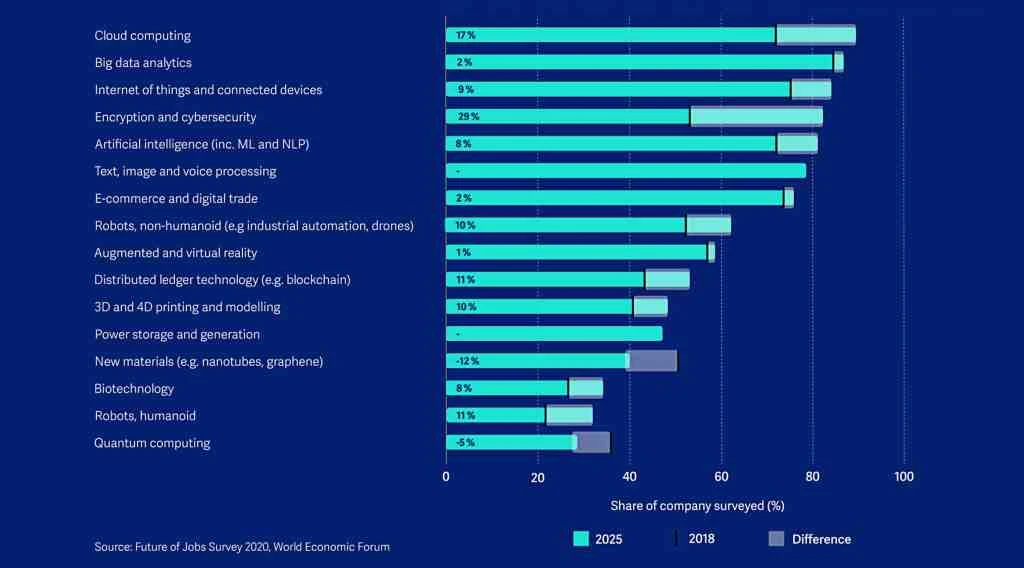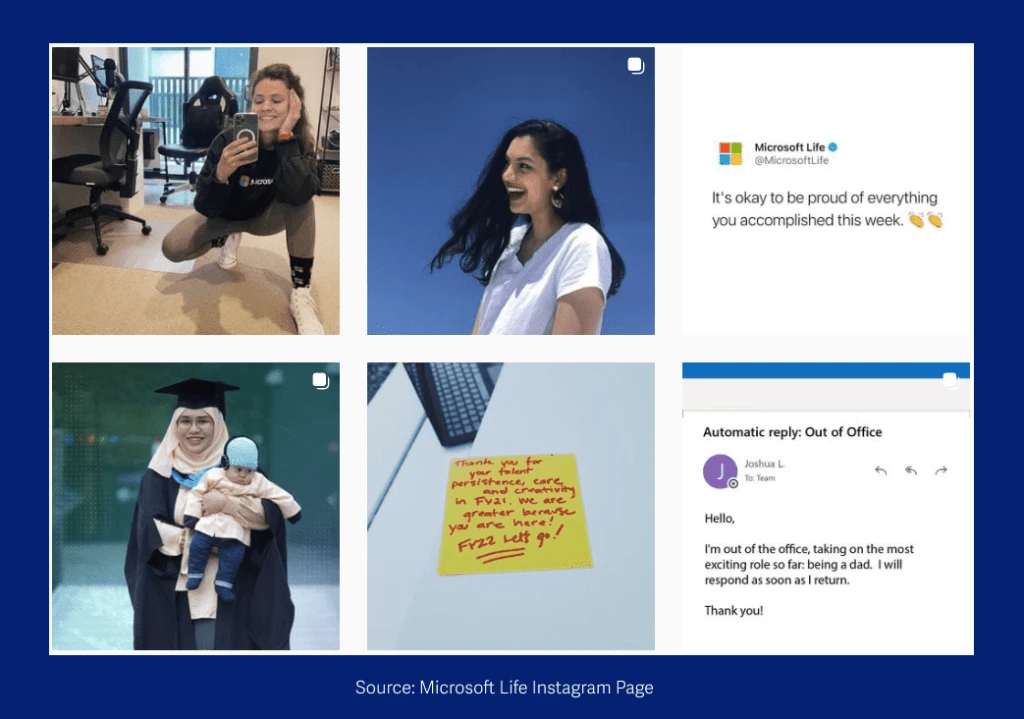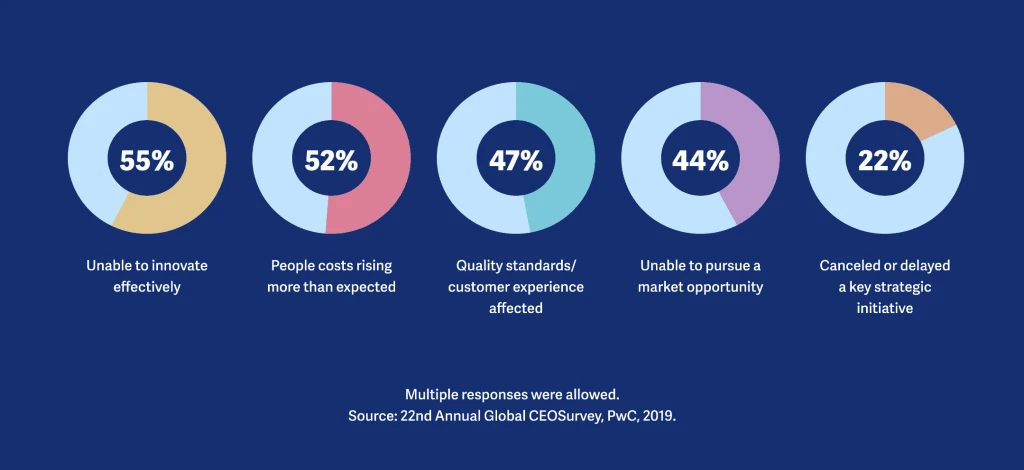Even before Covid-19, changing technologies and new ways of working were dramatically shaping how businesses sourced and hired their talent — and the pandemic has only accelerated this dynamism. Today, the traditional workplace is dead, and new models of work are everywhere. New skillsets are in demand, and talent diversity and inclusion are more important than ever.
According to LinkedIn’s analysis of work trends in 15 countries,
-
The most in-demand jobs for 2021 can all be done remotely
-
150 million new technology jobs will be created in the next five years.
And a World Economic Forum report states,
- 84% of employers plan to expand remote working.
So to win the war for talent in this new world of work, HR heads will need to rethink traditional approaches to recruiting and talent development. Complacency about changing business and talent expectations can cost your business a competitive edge.
Top sectors hiring right now
With life returning to normal, employment in industries decimated by the pandemic has started to pick up again. “[Those] sectors that had a hard time operating during the depths of the crisis will be looking to hire”, comments Nick Bunker, Director of Economic Research at Indeed Hiring Lab. “Even less directly-affected sectors are likely to pick up hiring as there is more economic certainty.”
According to listings on major job portals, technology and healthcare sectors are hiring at scale. In America alone, leisure and hospitality, which lost about half of its workforce last year, has recovered 73% of those losses. This is not to say that other sectors aren’t hiring as well (sales and marketing, customer service, logistics and transportation are seeing a surge in hiring too) but these are the standouts.
Top skills in demand for today’s workforce
As business leaders continue to focus on rapid digital transformation, it’s no surprise that digital skills are a top priority across sectors. “COVID-19 has escalated digital initiatives into digital imperatives…”, writes Scott Engler, a Vice President of Advisory at Gartner. ”…[This has created] urgent pressure on HR leaders to work with their CEO, CFO and CIO to rethink skills needs as business models change at light speed.”
Indeed, digital skills are now regarded as essential entry requirements. In an echo of Christopher Mims’s famous 2018 proclamation in the Wall Street Journal that ‘every company is now a tech company’, it’s safe to say today that every job is a digital one. In the UK, for instance, analytics software company Burning Glass Technologies found that baseline digital skills are required for most jobs. Proficiency in Microsoft Office and Excel or enterprise management software like Oracle or SAP is now part of almost every role.
Professionals with more specific and advanced digital skills, therefore, are in high demand. This is reflected in the World Economic Forum’s Future of Jobs Report 2020 as well as findings from LinkedIn on the most in-demand jobs for 2021, many of which depend on digital skills such as software development, data analytics, and digital marketing.

Technology adoption by 2025 (by share of companies surveyed)
The most commonly requested clusters of specific digital skills, pulled from different job portals are:
-
Cloud computing
-
Data analytics
-
Digital marketing
-
Problem-solving
-
Project management
-
Change management
But hiring talent with the required capabilities is proving to be challenging. According to Monster’s Future of Work: 2021 Global Outlook report, the top challenge employers have identified for 2021 is finding candidates with the right skills.
Hire great talent with these new recruitment trends
To address critical skills needs, recruitment professionals need to stay on top of the hiring trends we discuss in the following sections. None of these are going away anytime soon. The more willing you are to rethink traditional approaches, the better will be your organization’s ability to be competitive for many years.
Trend #1: Diversity, equity + inclusion is no longer a ‘nice to have’ but a ‘must have’
As employees become increasingly aware of social issues that affect them or the communities around them, they will begin to align themselves to companies that have a transparent DE&I policy and commitment.
To this end, businesses are realizing that diversity and inclusion are not just a feel-good initiative, but are central to a company’s success. This is quite clear from McKinsey’s Diversity Wins report which shows that more diversity has led to better profitability. Companies in the top-quartile for ethnic/cultural diversity on executive teams were 33% more likely to have industry-leading profitability. And companies in the top-quartile for gender diversity on executive teams were 21% more likely to outperform on profitability and 27% more likely to have superior value creation.
This drive to prioritize DEI within organizations is also reflected in increasing demand for D&I executive and leadership roles such as “Chief Diversity Officer”, “Head of Diversity & Inclusion” and “Vice President of Diversity & Inclusion. According to LinkedIn, job listings have more than doubled since June 2020, increasing 2.6 times.
How can you incorporate DEI into your talent strategy?
-
“Broadening the definition of what an effective successful candidate looks like can help make sure you’re more inclusive”, says Tony Lee, VP of editorial at SHRM. Think beyond the usual search terms to include age, disability, neurodiversity, or consider dropping the requirement of a four-year degree just like IBM, Costco, Hilton, Nordstrom and Bank of America have all done.
-
Set up a diverse hiring team. This will bring unique perspectives to vetting and interviews, and help candidates feel more comfortable.
-
Write inclusive job descriptions using gender-neutral language and keep an eye out for wording that may alienate applicants.
Hiring diverse candidates should be a no-brainer but can still be difficult for many companies. But while it may require tough and sometimes uncomfortable conversations in the short-term, it’s a long-term investment in driving innovative outcomes for your company.
Trend #2: Remote hiring is here to stay
The pivot to a remote-first model over the last year has impacted the way organizations recruit talent and for the better. The advantages for businesses are already well documented, but for recruiters, the primary advantages of remote hiring are:
- A larger and diversified talent pool:A business lives or dies by the quality of its people. Removing geographical distance as a limiting factor gives recruiters rich sourcing opportunities for sought-after talent, and the freedom to hire the best candidates they can find regardless of where they are.
One of our clients, a F500 consumer goods company, is leveraging remote talent from 9 countries to scale their campaigns.
- Quicker time to hire:Remote recruitment, powered by video interviews and digital feedback collection, can result in a more efficient and faster time-to-hire. Scheduling is made easier and less expensive because there is no traveling involved. Additionally, “managing the logistics which includes candidate RSVP, communication, and reminders becomes seamless”, says Anshuman Das, co-founder and CEO, CareerNet Technologies.
Not surprisingly, 74% of organizations in the APAC region said they would continue virtual hiring in the post-COVID world, according to LinkedIn’s new Future of Recruiting: Asia-Pacific report. 80% said their interviewing and hiring process is now fully remote.
- More diverse skill sets:Hiring remotely lets you build a workforce that’s varied in gender, race, ethnicity, sexual identity and ability.
With benefits like these, it’s difficult to argue against increasing and improving remote hiring capabilities. “The challenge is selecting and consolidating the right tools to deliver a sustainable and effective remote talent acquisition model”, advises Eric Friedman, Forbes Human Resources Council. ”…With limitless options, talent acquisition leaders should focus on what matters most: platforms that improve hiring efficiencies and seamlessly integrate with existing HR solutions.”
Additionally, as HR professionals well know, hiring is one matter and retention is another entirely. After successfully recruiting remote talent, keeping employees who are working from different parts of the world in sync, supported, and motivated will require refreshing processes and flexible attitudes.
And to bring things full circle, setting these flexible working arrangements in place at your company could make the difference for a candidate selecting their next career move. According to Gallup, 35 percent of employees would change jobs if it meant working off-site full-time.
Trend #3: An on-demand workforce in increasingly in-demand
Way back in 2001, Dan Pink published his book Free Agent Nation, in which he predicted a future dominated by independent workers. With remote work and remote hiring becoming a norm, the idea of an on-demand workforce is becoming increasingly appealing to many businesses today. Here’s why:
-
The availability of talent: The number of workers who are part of the so-called Gig Economy now is huge. According to research from the McKinsey Global Institute, 162 million people in the US and the EU are gig workers – that’s around 20 to 30% of the workforce.
-
Ease of sourcing gig workers:since 2009, the number of digital talent platforms has grown from 80 to more than 330. Companies like Amazon, Unilever and Enel have been early adopters of these platforms.
The advantage of hiring from an on-demand workforce
Ultimately, access to specialized, highly skilled gig workers means that businesses can commission one-off tasks and projects with ease; flexi and freelance workers can deliver high-impact work without undergoing full recruitment into the company.
“On-demand, highly skilled workers allow companies to tap into skills they don’t have internally and broaden their capabilities,” point out the authors of the Building the On-Demand Workforce report published by Harvard Business School and Boston Consulting Group. “[This], in turn, rapidly improve[s] the company’s ability to efficiently and effectively complete critical projects.”
And as a bonus benefit: an on-demand approach also lends itself to greater diversity and inclusion. Consequently, almost 90% of business leaders reported that talent platforms would be somewhat or very important to their organization’s future business advantage. 60% expected they would increasingly prefer to “rent,” “borrow,” or “share” talent with other companies.
Trend #4: More companies are turning to talent networks
Business leaders and recruiters constantly looking for new ways to find better candidates may find turning to internal as well as external talent networks particularly useful.
- Internal talent networks – Ecosystems of fans, candidates, employees, alumni, and even customers are one of the best ways to generate qualified leads for your search. It’s like your internal LinkedIn. Recruiters can nurture candidates by keeping them involved and invested in the company, for example, by sending information about job opportunities, events, projects, and other career-related information.
The result? A pool of talent available for employment tomorrow, next month or even next year. Internal talent networks are so effective that global companies like AT&T, Microsoft, IBM, and many other companies now have them.
- External talent networks – With the rise of digital platforms (Deloitte estimates that talent platforms manage over €2 billion in freelance or contract activity), firms can find potential candidates in a matter of minutes. Instead of sitting around and waiting for professionals to apply via company websites, recruiters can simply tap into the skill, speed, and scalability offered by communities and digital platforms like Hire Digital. It’s instant access to pre-screened applicants.
“[The] key feature of these platforms is their ability to accumulate a large database of job seeker profiles, job positions, and employers,” write Global Development Advisors Cecilia Chen and Marcus Haymon in ‘Realizing the potential of digital job-seeking platforms’. “Algorithms and automation enable both job seekers and employers to easily make personalized, sophisticated, and detailed searches.”
Trend #5: Employer branding is a critical business investment
With demand outstripping supply, employer branding (aka a company’s reputation), which was already important pre-pandemic, has become a critical recruiting and retention strategy this year.
Not surprisingly, the more a candidate knows about your company, mission, culture, people, and purpose – and if the impression is positive – the more likely they are to apply for a job, and continue working at your organization. A strong employer brand can lead to a 28% reduction in turnover and a 50% reduction in cost per hire.
How can you create strong employer branding?
-
Develop your employee value proposition (EVP):First, define the answer to “What makes your company the best place to work?” by talking to all stakeholders: c-suite executives, and employees alike.
-
Leverage your website and social media to tell your story: 52% of candidates rely on the information from a company’s website and social media to learn about the employer. All your content assets must be authentic and informative, so that candidates know exactly what to expect as an employee – be warned, today’s digital natives take platforms like Glassdoor very seriously when factoring in their decision to apply to a company.
Social media platforms like Twitter, Facebook, Instagram, and LinkedIn are also a great way to showcase how your company is a great place to work. Microsoft, for instance, does this to great effect, by highlighting all aspects of the employee experience on their Instagram page.

Microsoft employee experience as shared on Instagram
- Build brand advocacy:Existing employees are your most powerful source of marketing and play a key role in helping to attract talent; in fact, potential candidates are 3 times more likely to trust a company’s employee than the company itself. Encourage your employees to post about their experiences on sites like Glassdoor, and share their workplace stories on their own social media accounts.
If you’re able to get employer branding consistently right, you will find attracting top talent easier. You will also benefit from greater reach at lower marketing costs as word of mouth travels through the talent pool.
Trend #6: Recruiters need new skills for the new world of work
Recruiters today need to constantly hone their skills to stay ahead. Any effective recruiter must be a motivated salesperson with great communication and relationship-building skills. But today, to be a great recruiter, you will have to expand your skillset beyond just that.
Amy Schultz, Senior Director of Talent Acquisition at LinkedIn“Effective recruiters have always had a formidable arsenal of skills. But moving forward, the best recruiters will be curious and adaptable, with a learning mindset.”
Mark Lobosco, VP of Talent Solutions at LinkedIn, lists 7 valuable skills that recruiters need to have in order to be as prepared as possible:
-
How to adapt to an industry that’s changing fast
-
How to effectively work and manage teams remotely
-
How to influence business leaders
-
How to develop your personal brand
-
How to analyze and make sense of data
-
How to practice mindfulness and reduce stress
If you’re not already investing in your own growth, taking classes, attending virtual conferences, or working with mentors, can help you stay ahead of the curve in 2021, and drive better outcomes for your organization.
Trend #7: Upskilling your workforce = business survival
One of the greatest challenges recruiters faces when shortlisting candidates for open roles is a skills gap. Here’s the problem, neatly summed up on Quora by Angela Liu, senior manager of talent delivery at CompuGain: “Biggest problem: Skilled labor shortage… The shortage is most likely going to continue and manifest itself even more painfully in the years to come.”
In fact, 87% of employers say they are struggling to fill positions as a result of the skills gap, despite a high degree of unemployment. This lack of skilled workers can directly impact a business’s bottom line.

Impact of skills gaps on businesses. Source: SHRM.org
To meet this challenge, businesses are turning to upskilling programs. For instance, across sectors, 84% of companies are increasing investment in reskilling programs. For example, Amazon recently announced that they would upskill 100,000 people in the coming future.
What are the advantages of upskilling?
-
Saves time and money:It costs more and takes longer to recruit and train new employees than to upskill your current employees. In fact, SHRM reports that the average cost per hire in the U.S. is around $4,000, and that it can take an average of about 42 days to fill a position.
-
A boost in employee satisfaction, loyalty and employer branding, too:Employees that you invest in are more likely to stay with you as they grow in their careers. By giving them the knowledge and skills you need them to have, you nurture a longer-term relationship and reduce flight risk.
This, in turn, can have a positive impact on your EVP. “Employers who offer valuable training opportunities build their reputations as employers of choice,” says Kelly Aiken, vice president for the National Fund for Workforce Solutions, a nonprofit organization in Washington, D.C.
- Future-proof your business:Companies will benefit from a steady supply of the skills they need to sustain their business by “creating candidates”. Tech skills are critical no doubt, but don’t stop there – cognitive, emotional, and adaptability skills are also important. To quote McKinsey, “Companies can’t be resilient if their workforces aren’t.”
But while upskilling your workforce is clearly a business imperative, execution is easier said than done. Only 31% of functional leaders report they can quickly develop the talent they need with their current resources and processes.
Upskilling programs, while well-intentioned, can be riddled with inefficient practices, explains Taylor Blake, co-founder and chief product officer of upskilling platform Learn In. Some don’t give workers adequate time to learn and practice, while others only offer upskilling to a small group of employees. Some employers offer microlearning which seems like an easy way to upskill, but actually lack the comprehensiveness needed to help employees pick up entirely new skill sets.
“We have to face this tough reality: The policies, resources and tools offered to employees today don’t build the necessary skills that uplevel employees,” says Blake. “To set up our employees for long-term success, we have to ask whether we can upskill more inclusively and do it at scale.”
Conclusion
No matter what industry you are in, change is inevitable. More so now, due to the pandemic. Understanding the current trends puts you in a better position to take challenges head-on, recruit the best talent, and stay one step ahead in 2021.
